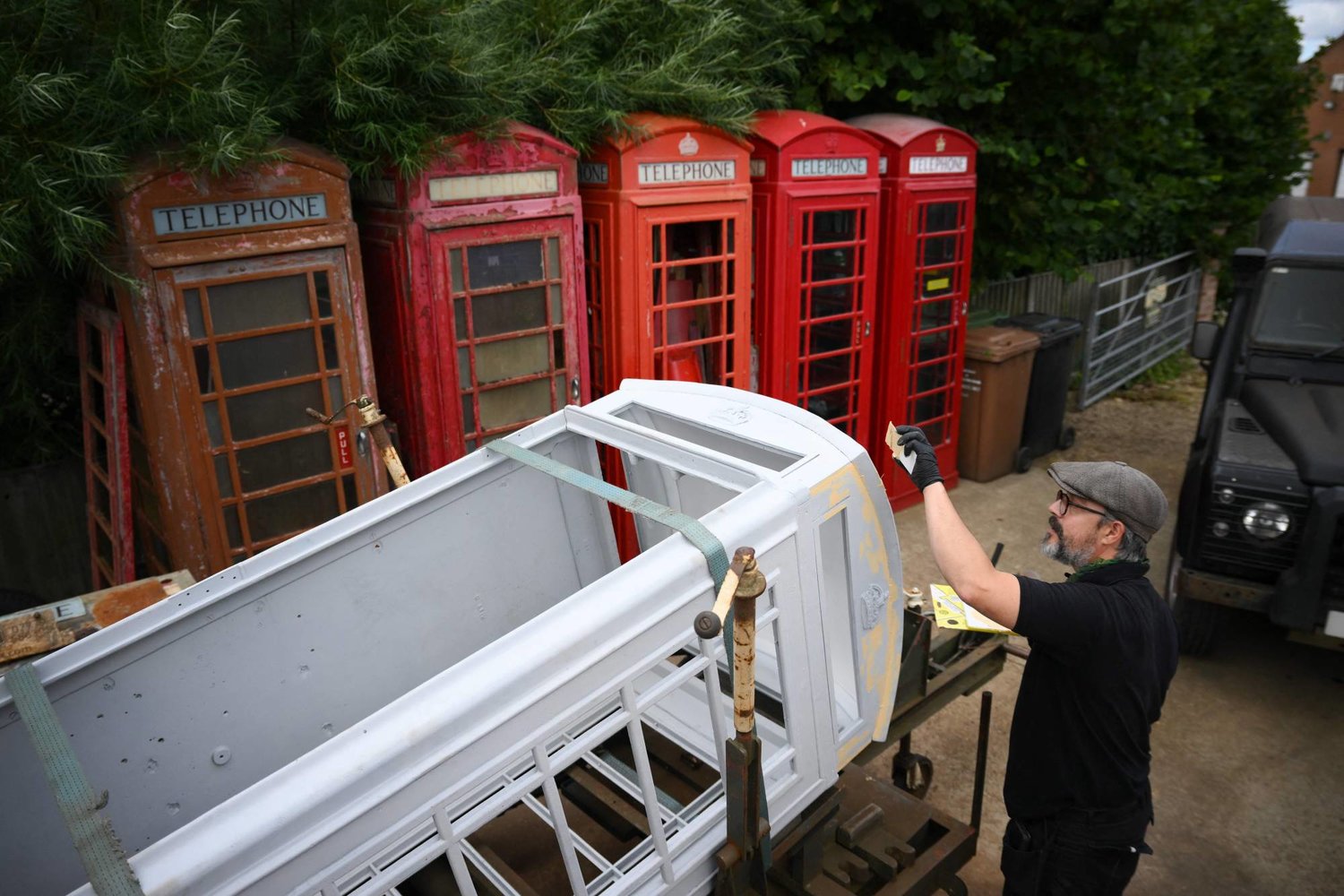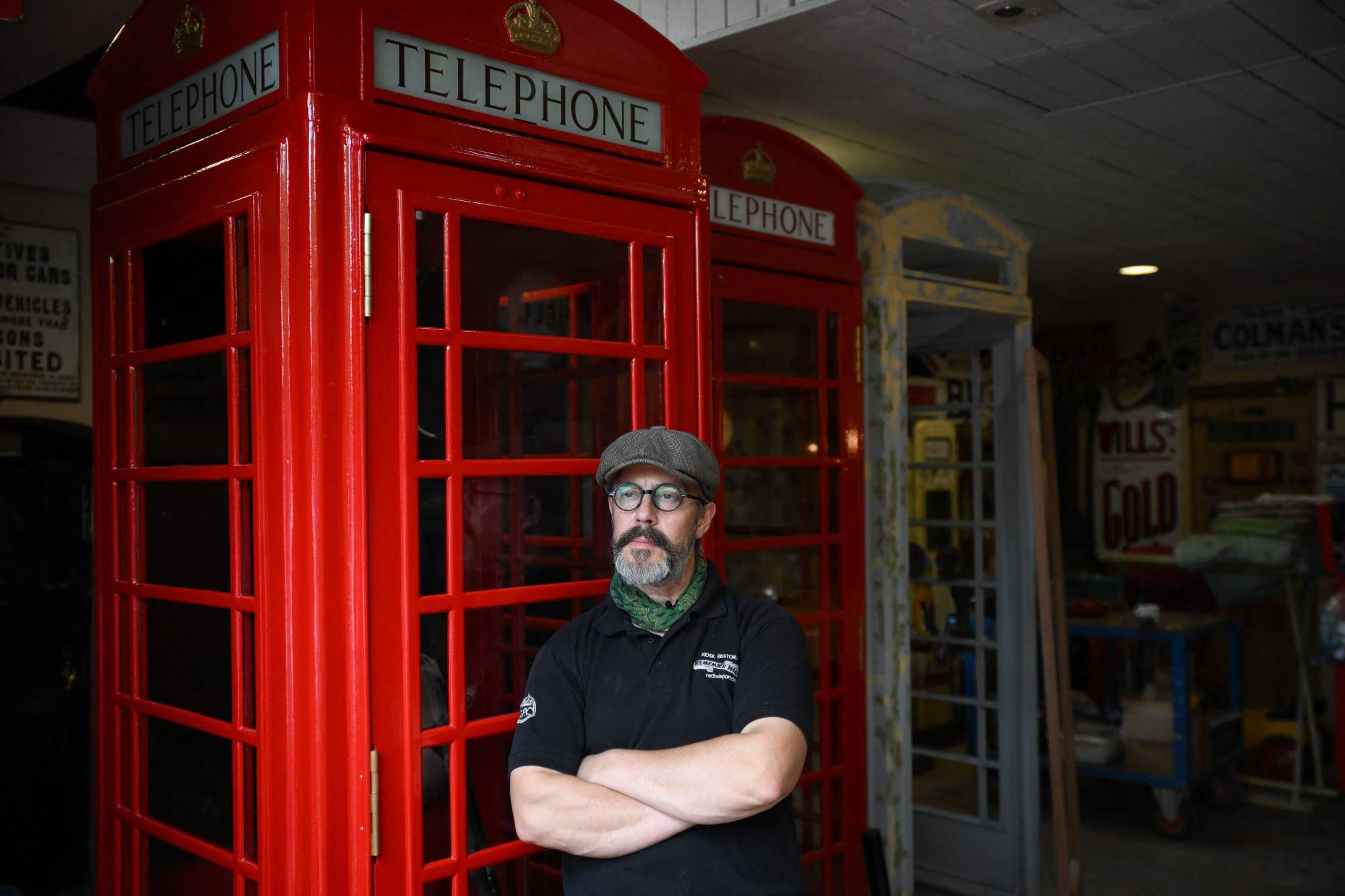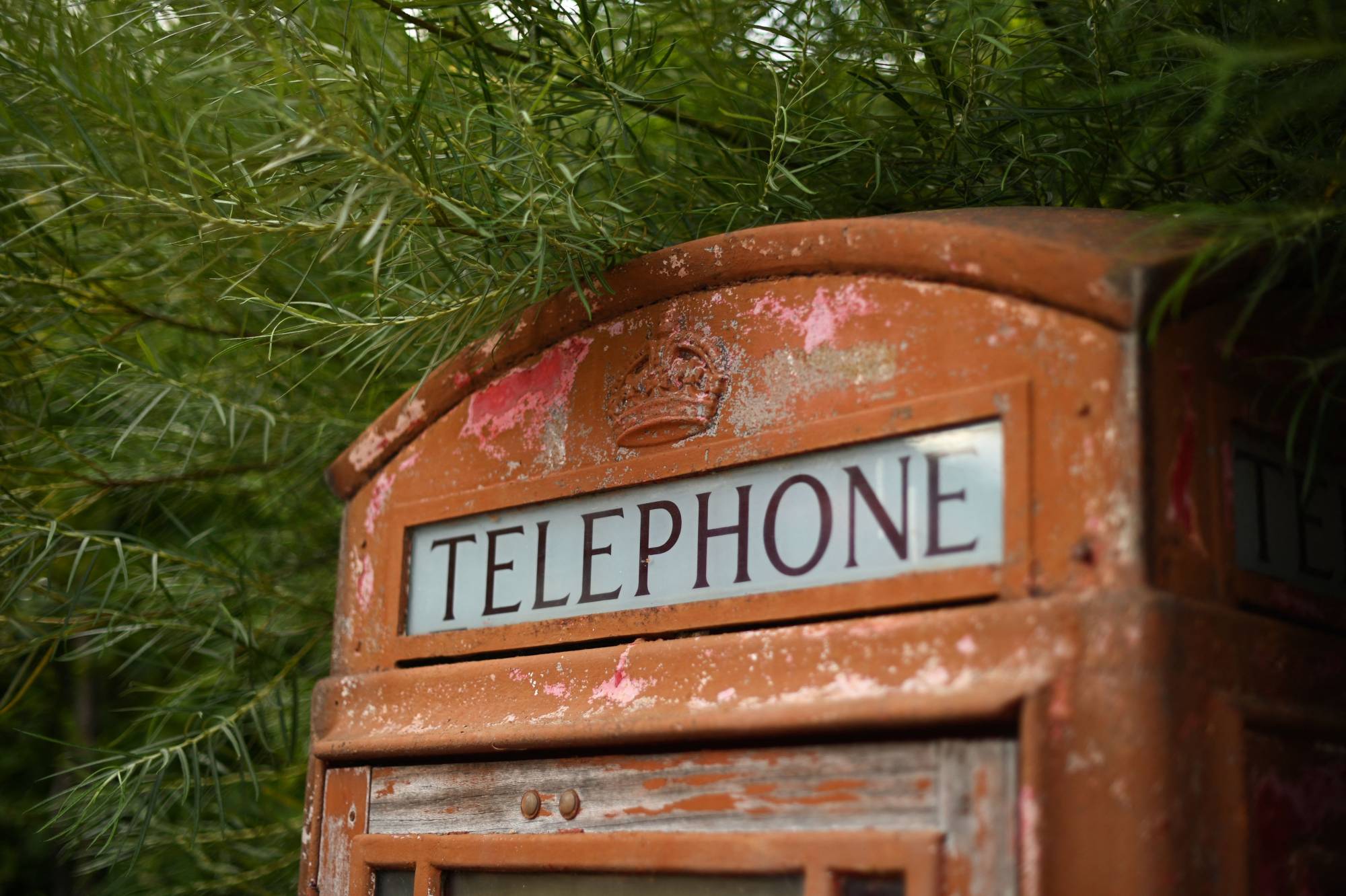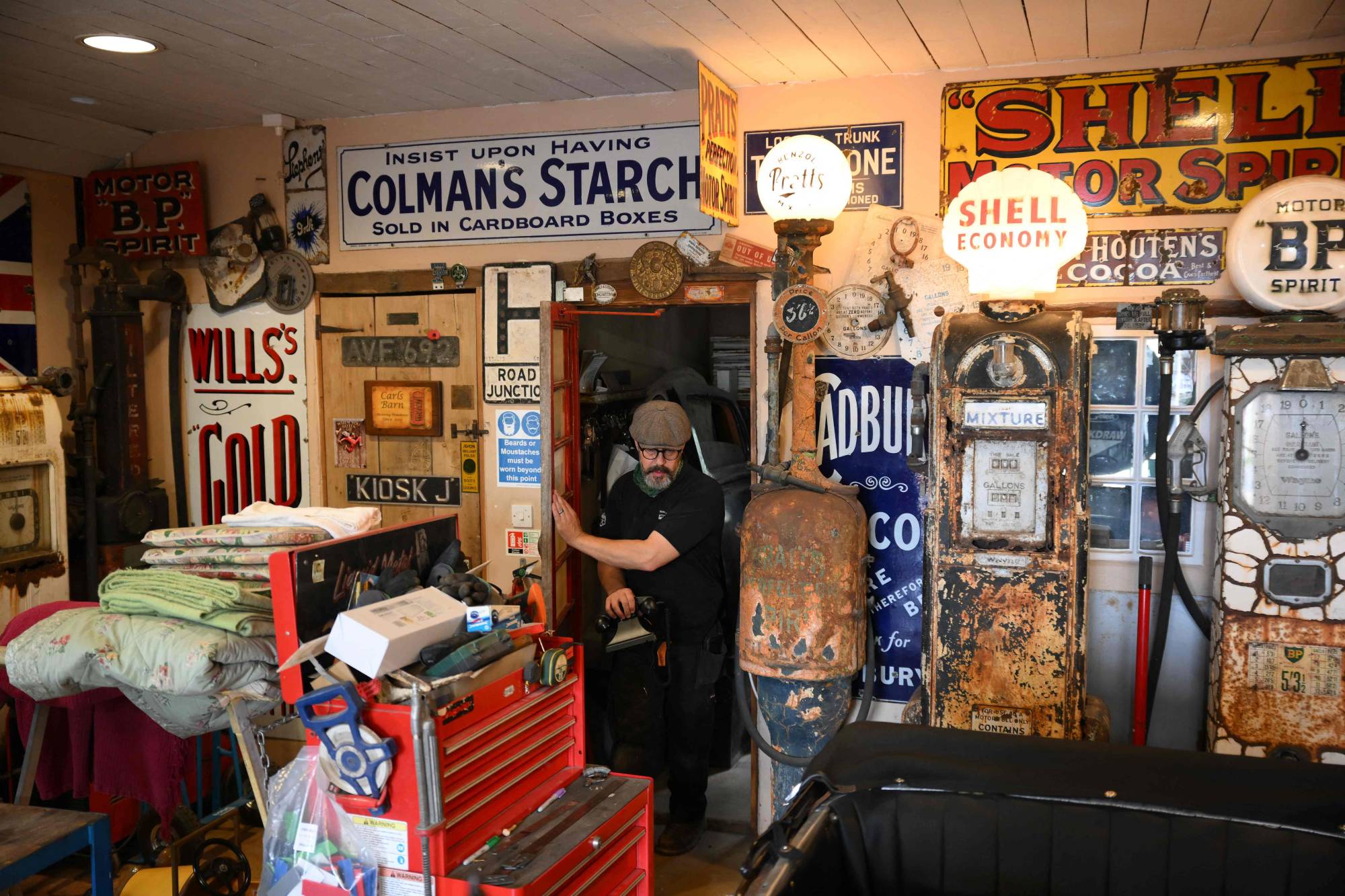Britain's Beloved Red Phone booth Repurposed for the Digital Age
Once symbols of London and Britain, the iconic red telephone booth have largely been retired in the mobile phone era. But many have now found new purpose as coffee shops, mini-libraries and more.
In his memorabilia-filled workshop, Carl Berg, 54, applies finishing touches to a red phone booth he's restoring, having spent two decades revitalizing the weather-damaged relics of bygone British life.
Berg tells AFP: "If you sent a postcard from anywhere in the world, with just a picture of a red phone box on, 95 percent of people would say, that's England."
Since the 1920s, the red booth have become quintessential London and British landmarks. But most vanished with the advent of mobiles.
Only around 20,000 working public phones remain nationwide, compared to around 100,000 in the 1990s. Of those standing, 3,000 are the classic red type, says BT which historically maintained them.
Around 7,200 decommissioned booth have been "upcycled" by charities, churches, councils into mini-libraries, tourist info hubs, defibrillator stations - even a dessert shop. Abandoned units can also be rented out by small businesses like Walkmyso gelato in central London.
On Russell Square, Daniele Manno sells his famous Italian dessert in two red phone cabins, telling AFP: "I think it's beautiful to bring a little bit of Italian tradition into an English icon."
The 29-year-old explains renting a decommissioned box from a private owner costs less than a conventional store. He refurbished the booths into a cafe, adding shelves, fridges and an espresso machine while retaining their iconic look.
For Carl Berg, restoring a phone box takes around six weeks on average. He starts by delicately dismantling it, saying: "You don't know what you're going to find underneath the paint. It could be a real jewel, but it could also be a bit of a dinosaur."
At his Kings Lynn workshop in eastern England, Berg has restored numerous booth found smashed up, windows shattered, doors rotten.
Once stripped down, the iron frame is sandblasted to remove paint, rust and debris. Resin and sand are manually applied to fix imperfections - an arduous, days-long process.
Finally, the classic Post Office Red paint is applied before windows are re-glazed and a new outer wooden door fitted.
Berg became a full-time restorer after a car industry career, running "Remember When UK".
It began when he bought a box found at a property sale, restored it and displayed it in his garden. He sold it but missed his restored box, realizing his passion for British memorabilia.
Berg now works on multiple booth simultaneously, including the iconic K2 model - the first red phone booth from 1926 designed by British architect Giles Gilbert Scott, famed for his civic structures dotted across London.
Now in his fifties, Berg says his enthusiasm remains undimmed: "I'm getting a little bit older and everything seems to be getting a little bit heavier, but I don't think my passion has changed at all (...) it's probably increased, to be honest."







